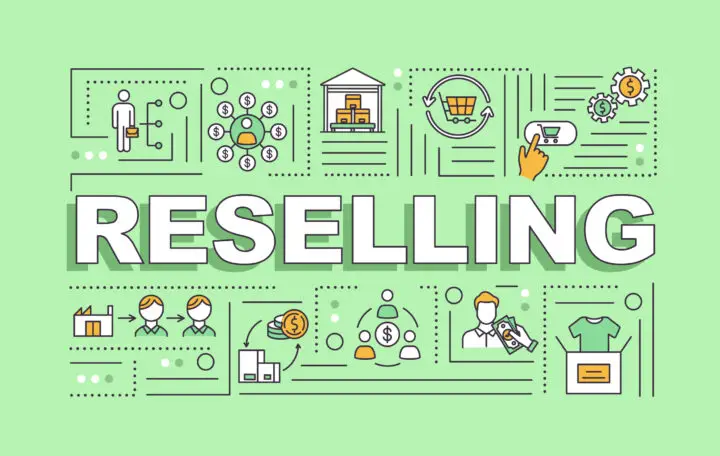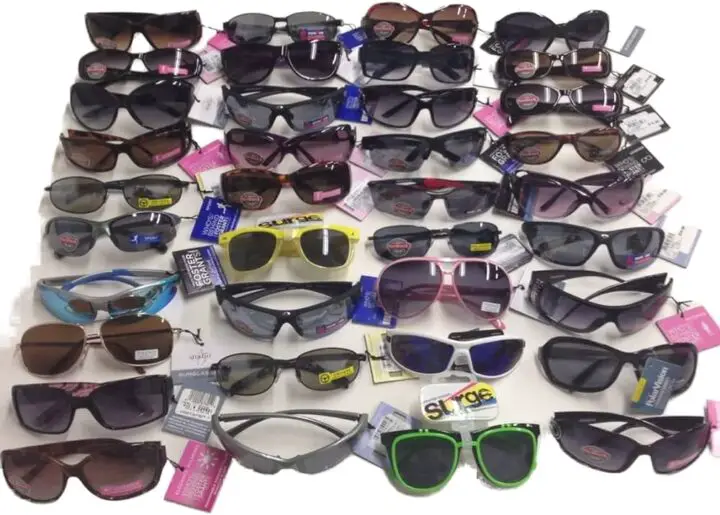The Art of Pricing: Strategies for Selling Sunglasses in Bulk

Selling sunglasses in bulk volumes requires smart pricing tactics to turn large inventory while maximizing profit margins. Understanding effective markdowns, bundles and incentives helps you profitably move bulk sunglass stock.
Pricing Factors When Selling Bulk Sunglasses

Consider the following factors when pricing bulk sunglasses inventory:
Inventory Carrying Costs
The overhead spent storing unsold stock eats into margins. Mark down stale products to free up capital.
Age of Inventory
Liquidate outdated styles quickly before they become unsalable. Deeper discounts may be needed on older merchandise.
Sales Volume
On fast selling items, small markdowns suffice to spur turnover. Apply steeper reductions to stagnant poor performers.
Brand Popularity
In-demand designer names can still sell with minor price cuts. Lesser known brands need bigger markdowns to attract buyers.
Price Elasticity
Some price-sensitive shoppers only buy at deep discounts. Apply more aggressive cuts to attract deal seekers.
Market Positioning
If competing as the price leader, lower pricing may be needed to undercut rivals. Luxury brands require careful limits on markdowns.
The people at Olympic Eyewear say you should consider all these dynamics when pricing bulk sunglasses for optimal sell-through. Test promotional prices and assess response.
Employing Retail Markdowns

Using incremental markdowns converts bulk sunglass inventory into cash flow:
Offer Regular Promotions
Advertise 10-25% off sales weekly or monthly to spark interest and traffic. Limited-time deals incentivize buying.
Introduce Progressive Discounts
Start with 25% off clearance items, then increase to 40%, followed by 50-75% off remaining stock. Steeper cuts motivate buyers.
Promote Bundle Deals
Offer buy 2 get 1 free promotions or packaged accessory deals to increase purchase sizes.
Use Psychological Pricing

Reduce prices to “magic numbers” like $19.99 that convey deep discounts below $20 price points.
Create Clearance Sections
Dedicate store areas, site pages or events to liquidate overstock items through mega markdowns.
Crafting Creative Bulk Bundle Offers
Bundling surplus sunglasses into kits, multi-packs and thematic packages motivates bulk orders:
Build Gift Sets
Package 2-3 pairs with branded cases, lens wipes and chains – perfect for birthdays, holidays, and corporate promos.
Curate Lifestyle Collections
Offer sports fan packs with logo tees and tailgate shades, or beach bundles with sunscreen, hats, and sunglasses.
Appeal to Corporations
Sell themed bulk assortments for corporate gifting, swag, and incentives – think “Summer Fun Packs.”
Target Multi-Buyers
Appeal to multi-generational families, bridesmaid groups and vacationers with discounted multi-packs.
Cater to Resellers

Provide bulk lots of mixed styles and apparel for pop-up shops and secondhand sellers.
Bundling surplus inventory with complementary products or services boosts its perceived value. Give customers options to build their own bulk sets for greater appeal.
Maximizing Bulk Profits with B2B Incentives
Wholesaling bulk sunglasses to retailers and corporations requires additional incentives:
Offer Volume Discounts
Structuring pricing tiers like 5-10 pairs 10% off, 10-25 pairs 20% off incentivizes larger orders.
Absorb Shipping Costs
Offer free shipping on qualified bulk orders to reduce vendors’ overhead.
Provide Merchandizing Materials
Include free sunglass displays and signage to help partners resell products.
Share Marketing Assets
Supply images, ads, and social content they can customize to promote products.
Extend Payment Terms
Offer Net 30 or 60 day payment terms so buyers can resell before owing.
Bundle Value-Added Items
Include bonus packs of microfiber cloths, headbands or neck straps vendors can upsell.
Removing barriers like shipping costs and minimums encourages business buyers to purchase more. Make it easy and worthwhile for partners to acquire and resell your overstock products.
When pricing bulk sunglasses, there are several key strategies to consider for maximizing profits and effectively managing inventory.

Understand Your Market: Knowing your target market is crucial. Are you selling to budget-conscious consumers or aiming for a high-end market? Your pricing should reflect your target demographic’s expectations and spending habits.
Analyze Competitors: Keep an eye on your competitors’ pricing strategies. If they are offering similar products, you need to price competitively while ensuring you don’t undercut your own margins. This doesn’t always mean being the cheapest; sometimes, positioning your product as a premium option can justify a higher price tag.
Consider Seasonal Trends: Sunglasses are often seasonal products. Pricing strategies should adapt to seasonal demand. For example, introducing early bird discounts for summer or end-of-season sales can help move inventory more efficiently.
Leverage Scarcity and Exclusivity: Limited edition ranges or exclusive designs can be priced higher. Creating a sense of scarcity can drive demand and allow for premium pricing. This approach works well with designer or unique sunglasses styles.
Implement Dynamic Pricing: Dynamic pricing involves adjusting prices based on current market demands and trends. This strategy requires constant market analysis but can be highly effective in maximizing profits, especially during peak seasons.
Focus on Perceived Value: Enhance the perceived value of your sunglasses with high-quality packaging, excellent customer service, and strong branding. Customers are often willing to pay more for products that are presented as high-value.
Use Data Analytics: Utilize sales data and customer feedback to understand which products are most popular and profitable. This data can guide your pricing decisions and inventory management.
Experiment with Pricing Models: Don’t be afraid to test different pricing models. For example, you could try a tiered pricing structure where customers get a discount for purchasing multiple items. This encourages larger purchases while maintaining a higher perceived value for individual items.
Balance Short-Term and Long-Term Goals: While short-term sales are important, ensure your pricing strategy also aligns with long-term business goals. Consistently undercutting prices can harm your brand’s perceived value over time.
Educate Your Customers: Use marketing and product descriptions to educate your customers about the quality and features of your sunglasses. This helps justify your pricing and differentiates your products from cheaper alternatives.
Stay Flexible: The market can change rapidly, so it’s important to remain flexible and ready to adjust your pricing strategy as needed. This agility can be a significant competitive advantage.
By combining these strategies, you can create a robust pricing plan that helps sell your bulk sunglasses effectively. Remember, the key is not just to sell your inventory but to do so in a way that maintains healthy profit margins and strengthens your brand’s market position.
Conclusion
Pricing bulk sunglass inventory to sell through quickly while maximizing revenues takes strategic analysis and creativity. Understand your break-even costs before marking down. Test promotional price points and product bundles to optimize turnover and bottom line impact. Refine your approach based on sales velocity and margin goals.
